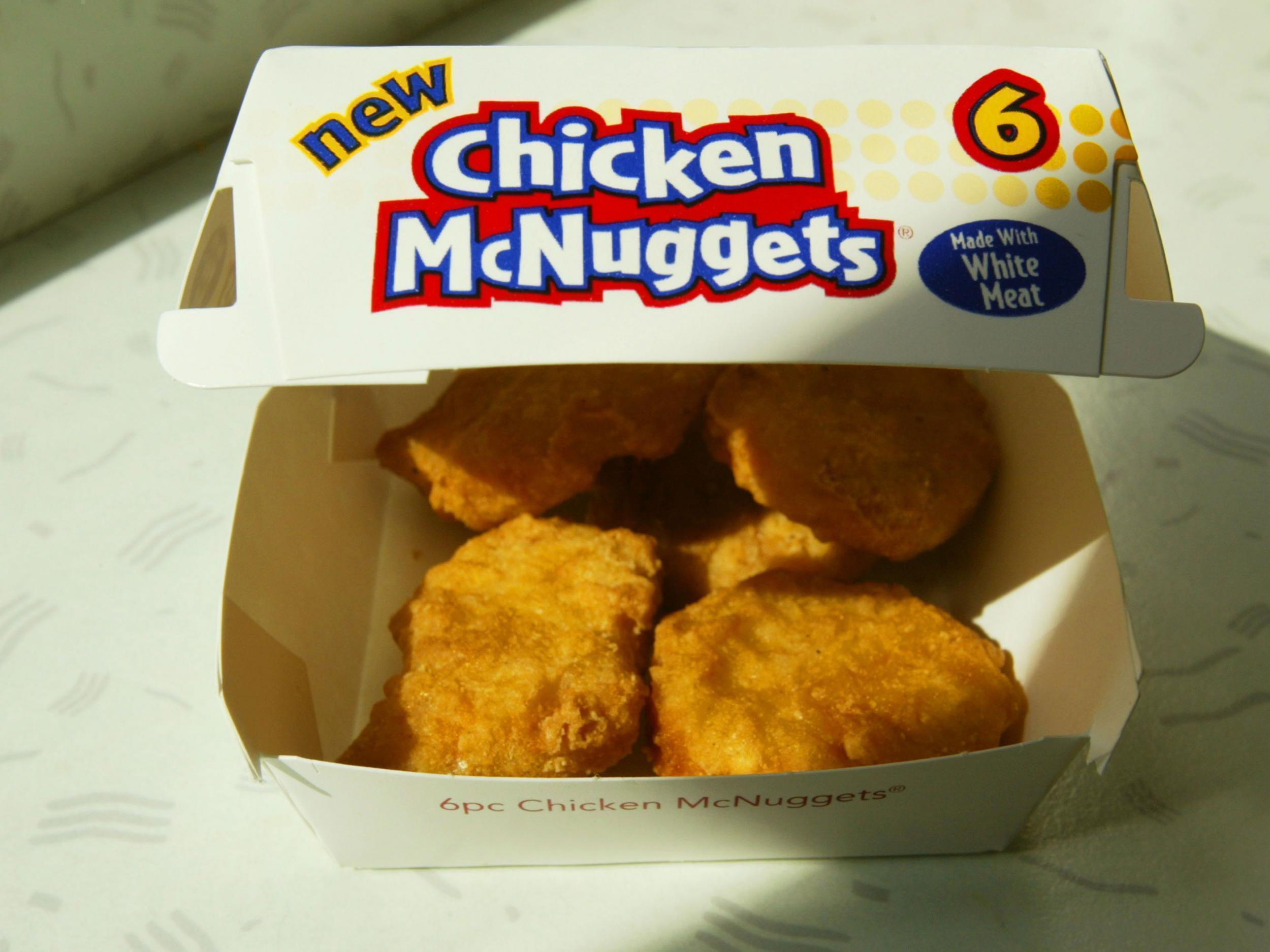What really goes into chicken nuggets? New book reveals additives in popular foods and their alternative uses
McDonald’s chicken nuggets contain 40 different ingredients including dextrose - a sugar also used by shoe makers

Have you ever wondered what ingredients really make up the battered crust of a McDonald’s chicken nugget?
A food writer and photographer have dissected our favourite foods to reveal the flavourings, colourings and preservatives lurking behind their tasty exterior.
Ingredients, a new book co-created by photographer Dwight Eschliman and food writer Steve Ettlinger distils 25 products, including popcorn, Red Bull and chicken soup, focusing on 75 of the most common food additives and revealing what each one looks like, where it comes from and why it is used.
Food 02 / 25 - Campbell's Chunky Classic Chicken Noodle Soup
A photo posted by INGREDIENTS: (@ingredientsthebook) on
Studying publicly available nutritional information the pair arranged small piles of additives in rows and photographed them from above, to show all the components that really make up our snacks
McDonald’s chicken nuggets were found to contain 40 different ingredients.
Ingredient 07 / 08 - Sodium benzoate from: Food 04 / 25 - Dr Pepper
A photo posted by INGREDIENTS: (@ingredientsthebook) on
These included dextrose, a sugar also used by shoe makers to make leather more pliable, and corn starch, used for thickening food as well as also being a substitute for petrol.
Among the chemicals demystified in the book are shellac, made from insect lava secretion and used to coat apples making them look shiner; alginate, used for rubber masks and salad thickener; and ethyl vanillin which “begins as a toxic, explosive benzene” and turned into a flavouring for butterscotch and rum products.
Other ingredients with surprising alternative uses include Azodicarbonamide, used to strengthen dough and make baked goods lighter and also used as a foaming agent in plastics and rubber, according to the book, meaning as well as putting the “spring in your sandwich rolls”, it also puts “the bounce in your yoga mats”.
Additive 25 / 75 or Diacetyl “totally stinks” in its concentrated form says the book and “when it is freshly manufactured it must be handled especially carefully due to its intensely disgusting odour,” the stinky substance is also the main ingredient in artificial butter flavour, such as that used on shop-bought popcorn.
Not all these mystery ingredients are bad, however: “I wanted to include some things that are good for you, because it’s inevitable that when you talk about processed food … it’s impossible to avoid the negative perception of 'it’s a chemical, it must be bad,' Mr Ettlinger told Muchies.
A photo posted by INGREDIENTS: (@ingredientsthebook) on
He added, without any additives, “we would have a little trouble having a civilization that we know now,” the Washington Post reports.
Mr Eschliman said: “If you think it’s great that we can go to the grocery store, we have dozens of items to choose from, we don’t worry about being poisoned, we don’t worry about starving when there’s a bad harvest—a lot of this goes back to food additives and how they allow the industrial process of making food possible.”
Subscribe to Independent Premium to bookmark this article
Want to bookmark your favourite articles and stories to read or reference later? Start your Independent Premium subscription today.

Join our commenting forum
Join thought-provoking conversations, follow other Independent readers and see their replies